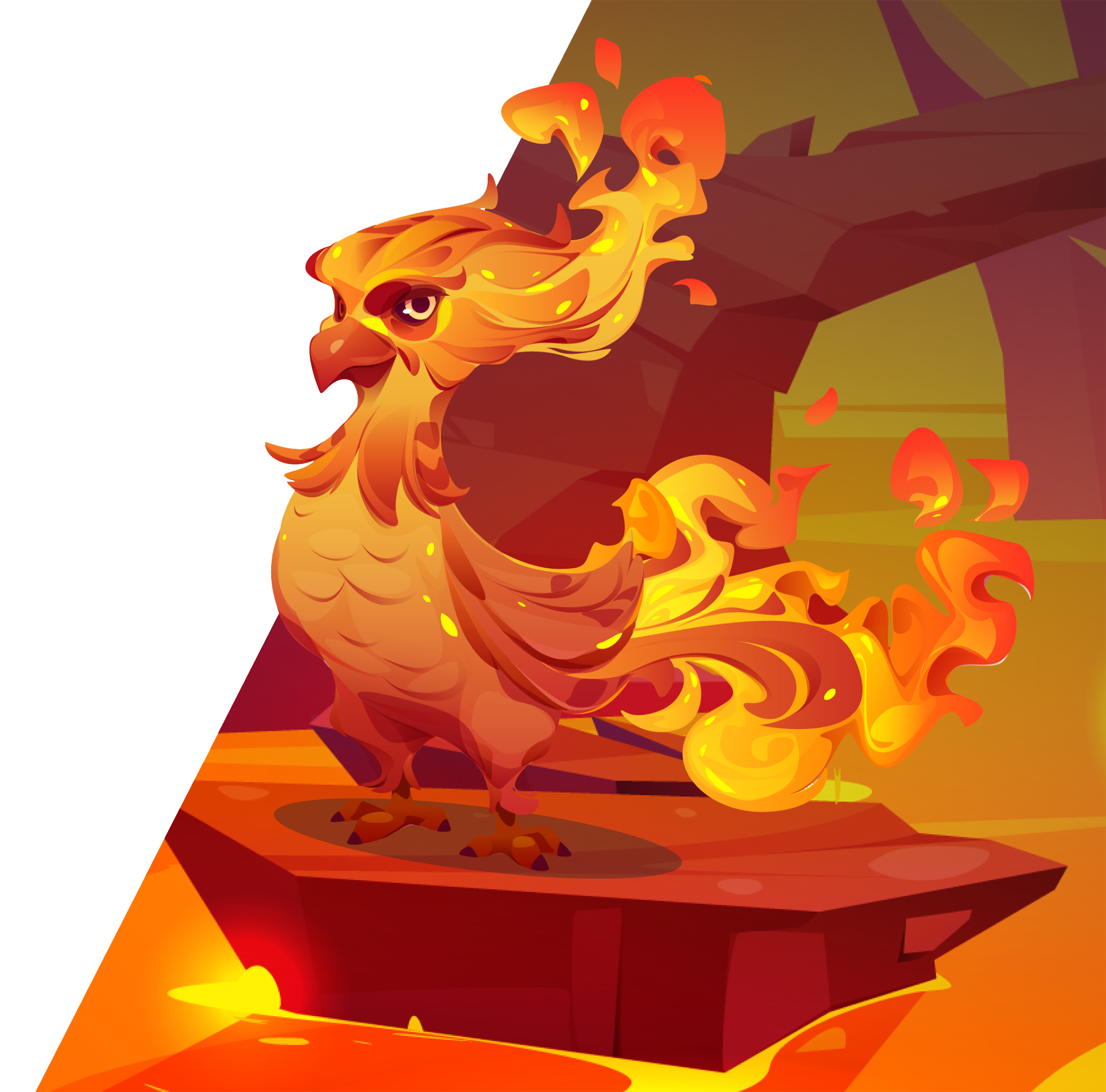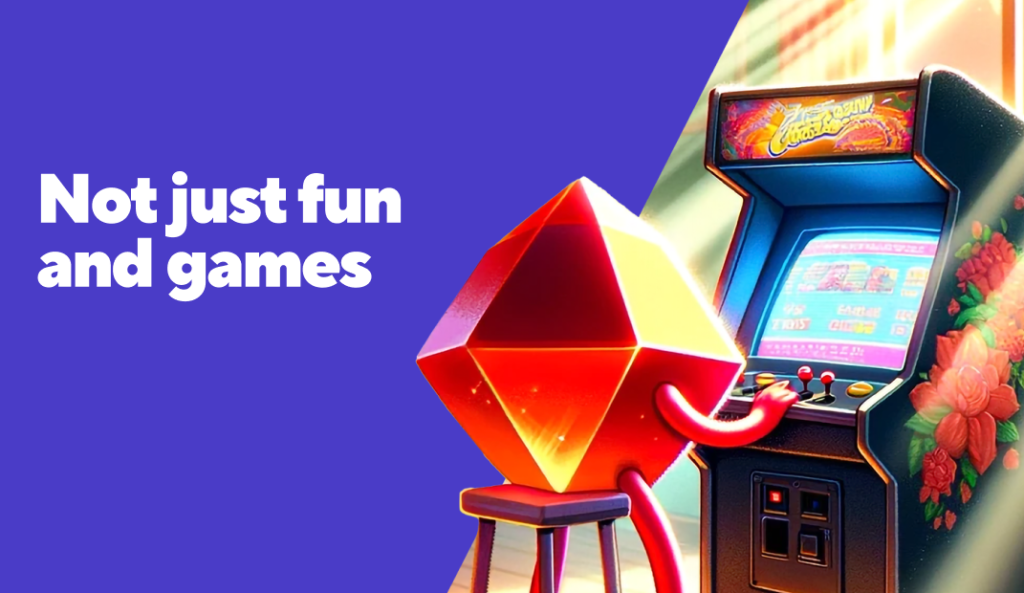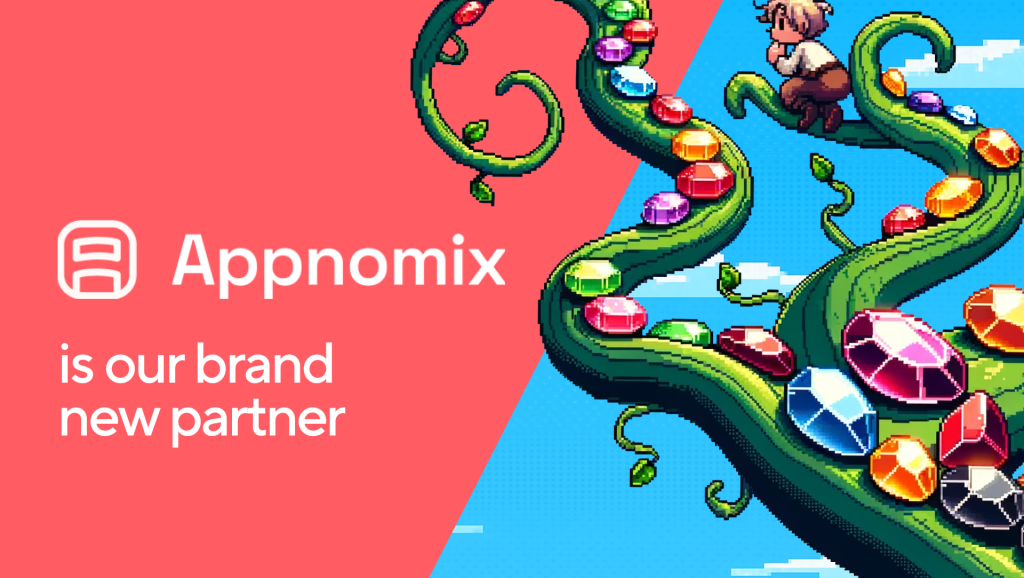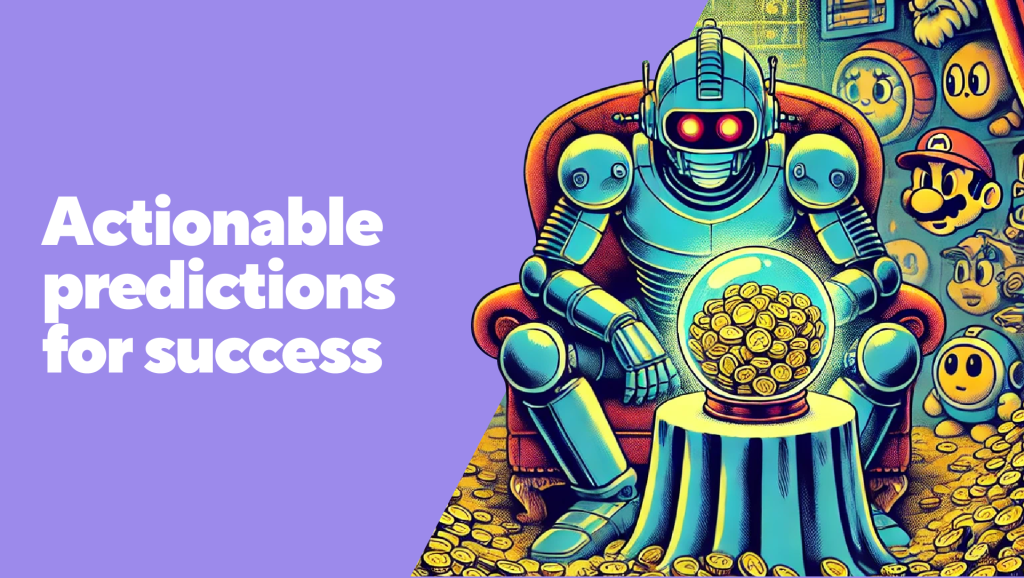“Making a great game doesn’t guarantee financial success” is one of the most common sayings you’ll hear when it comes to mobile game monetization. While some mobile games gain extreme commercial success solely because of their engaging gameplay, they’re rare and fall under the exception category. Even then, one can strongly argue that while these exceptional mobile games did well financially, they fell short of reaching their full monetization potential.
Many talented mobile game developers overlook this vital aspect and barely keep their studios up and functioning. Late 2023 and so far, 2024 has been brutal for the gaming world, and game developers who do not fully understand mobile game monetization are falling behind their competition. During the pandemic and lockdowns, the mobile gaming industry saw phenomenal growth. Mistakes could be tolerated and there was room to try alternative strategies. In the current landscape, however, there is less room for errors, and a greater need to be more data-reliant, and focussed on monetization strategies.
In fact, cost per install (CPI) used to be a near-sure way to show mobile game developers and publishers if the game had the potential to generate high revenues or not. Today the story is quite different; CPI alone is not a good comrade when making crucial mobile game monetization decisions.
So, what are the best practices and models for mobile game monetization in 2024? Well, take a seat, and let’s explore mobile game monetization strategies.
What is mobile game monetization?
Mobile game monetization refers to making money with your mobile game. In essence, it’s not a complicated concept, but once you dig a little deeper it can get out of hand very quickly. As a mobile game maker, you want to develop a business model that will earn you a decent amount of money, have your company profitable, and make the most out of it without disturbing the gameplay/monetization balance.
The original formula is still the same: To maximize your earnings from your mobile game, you should always do extensive testing across mobile ad platforms, choose
your target audience and marketing campaign targeting carefully, and always collect healthy player data to better make sense of what’s working and what’s not.
However, there’s a big difference between games that maximize their monetization strategy and those that do not. Also keep in mind that, regardless of which category a game falls under, there are always areas for monetization improvements within a game.
When done well, a mobile game monetization strategy can help you maximize your revenue per game, increase your profits, and even allow you to create an IP, helping your mobile game company have a strong start with new games. King’s Candy Crush series, Playrix’s Scapes games, and Dream Games with their Royal M3 titles are some good examples.
Obviously, you can’t just pick a monetization model, call it a day, and hope it works, but let’s not get carried away. There’s much to discuss.
What is the benefit of mobile game monetization?
Optimizing your mobile game for monetization allows you to maximize the lifetime value (LTV) of your players. Doing so results in more revenue from existing players, higher rankings in app stores, and more revenue to spend on user acquisition campaigns(UA).
How you optimize your mobile game depends on several factors and each game requires a different strategy. You can’t just copy what worked for one company and think that you’ll get similar results on smaller or bigger scales. No matter how many case studies you go through, you’ll miss some important factors only the marketing team behind said game would know and that information could be the key to what made their title so successful and profitable.
Employing a data-driven approach to optimizing your mobile game monetization efforts shouldn’t be optional but essential. If you know your audience well and understand what they resonate with, you can even deploy your original strategy and maximize your profits like no one else can.
Mobile game optimization, when done right not only increases LTV and decreases your UA costs, but also helps you understand your audience even better. You’ll even discover new and interesting ways to reach audiences that fall out of your core target but may become valuable players once they test your game.
You can click here to read more about improving player LTV and making your game more successful than ever before.
Want us to manage your game?
Let us manage your game to greatness for share of uplift, with no upfront cost. Talk to us today if that sounds like a good fit for you
How has mobile game/app monetization been affected in 2024?
In terms of targeting, the personalization of in-game ads and offers used to be straightforward, that was until Apple’s ATT (App tracking transparency) data policy changed in 2021. What is now referred to as the post-IDFA world sees granular behavioral profiles inaccessible and ad platforms struggling to target the users they were once so easily able to do.
In 2024, granular targeting is at a stage much worse than it was before. Mobile game monetization strategies that involve creativity and innovation see more success, while studios that rely on outdated methods continue to strive and see their revenue taking massive hits left and right.
The once powerful IDFA has become nearly useless and Apple’s SKAN data does not have the granularity of information necessary for specific user targeting. Instead, data is now presented from random samples with a level of anonymity based on average values of segments.
The impact of Privacy Sandbox on Android has not been as consequential as Apple’s IDFA changes, as they’ve been implemented at a much slower pace, allowing marketers to adapt a little better. Additionally, Android games typically make up a much smaller percentage of a game’s revenue, where privacy changes to GAID do not seem as harsh as those to IDFA.
Whilst the previous does make it more difficult to maximize game monetization, it doesn’t make the need for good monetization any less important.
What monetization models work in 2024 for mobile games?
The changes mentioned above had a drastic impact on the mobile gaming industry. Hypercasual games are no longer the jewel, and most prominent hypercasual developers, if not all, switched to making hybrid-casual games.
Developers started adding different kinds of meta layers to their games, whilst some even turned hypercasual games into mini-games within hypercasuals in hopes of hitting two monetization birds with one stone.
Rollic’s Mayor Match is a good example here; the Match-3 puzzle mobile game includes several side tasks in which players find themselves playing mini-games, which are actually hypercasual games. Of course, employing such meta layers opens new doors for mobile game monetization, because now you have more options to personalize the gameplay and offer players cosmetics or other in-app purchases (IAP) to pass the levels. Another benefit is increased engagement levels, meaning increased return rates and increased LTV.
Hybrid monetization for mobile games
When even the strongholds for hypercasual games start adding in-app purchases to their games, you know too well that times are changing. Seeing a new game that’s reliant on advertisements or IAP is super rare. The mobile gaming world shifted heavily towards combining several revenue streams, even for casual games. What used to be seen as heresy is now the norm: You need to design your game with both advertisements and IAP in mind.
Playing around your core game loop and introducing optional mini-games within your main game can open up so many new revenue streams. Diversifying increases your revenue, and profits. Plus, chances are your players will enjoy their time even more.
Battle Passes and Season Passes are on the rise
Season passes continue to gain prevalence. With their popularity among PC and console gamers, mobile game developers and publishers are making sure this game monetization strategy finds solid ground in the mobile world as well.
Not only do these passes offer good revenue streams for your mobile game, but they also increase player engagement and daily/weekly return rates. For instance, League of Legends and Call of Duty are two great examples that make the best use of this game monetization system, and their mobile versions also benefit heavily from this approach.
Increased player engagement through these premium packs also pushes players to spend more, especially if they find the seasonal pass worth the investment, both time-wise and financially.
Adding Rewarded Ads to the mix
Rewarded ads have also become a solid mobile game monetization method. You simply lock some rewards behind ads or give the player extra lives for viewing them, which in turn allows a player to progress faster.
When looking for ways to optimize your monetization efforts with rewarded ads, the possibilities are endless and all depend on what kind of game you’re cooking – or already have cooked.
The most important thing here is to once again find the right balance and not push the player away from your game by introducing intrusive ads. Giving the ropes to the players as to when they see the ad also improves your chances of turning them into loyal, returning customers.
Social games, challenges, and tournaments
Social meta layers have seen a great rise in 2024 and this didn’t occur out of the blue. Many mobile game developers and publishers were preparing and/or have added several social layers into their games to increase engagement, and competitiveness, or simply build towards a common goal.
Even a simple team PvE challenge, when done right, can significantly increase LTV due to increased engagement levels. Players may share lives with their party members to reach their goal which will award them a unique bonus. Many city-building games employ this strategy and it’s been a popular method among a variety of puzzle games as well.
From an outside perspective, it may not seem as much, but one should not deny the competitive spirit of mobile game players; mobile game statistics don’t tell lies. There’s a reason why pretty much any good mobile game comes with leaderboards and mini-tournaments that force the player to dedicate more time than they usually would have, watch rewarded ads, or simply invest in the game with hard currency to get ahead of others.
This is a very old game monetization model, to be frank. It used to be extremely popular with browser games. Now, social meta layers are seen as a must for most mobile games.
Got new, active or legacy games you feel are underperforming?
Let us manage your game to greatness for share of uplift, with no upfront cost. Talk to us today if that sounds like a good fit for you
Dynamic pricing, regional pricing, and personalized deals
Even if you don’t have a healthy amount of player data at hand, you can always look out for a good partner that your studio’s chemistry will match, and use their data analytics tools to create effective pricing and monetization strategies.
Implementing dynamic pricing or regional pricing strategies is another avenue to ensure you maximize revenue from each market you launch your game on. With spending behavior varying per country, gamers across the world will have different
entertainment and gaming budgets. As such, an understanding of spending behavior per region can help maximize the special deals you offer.
Starter Bundles
The monetization method of starter bundles has gained popularity lately; often seen in the puzzle genre, specifically in merge and match games. Having said that, the trend is catching up with other main and subgenres as well.
Needless to say (as the name suggests) this mobile game monetization strategy targets first-time players and ensures they have an easy time discovering the game and feel rewarded for spending time in your game. Overall, it’s about making the first-time gaming experience an easy and fun ride; ensuring that players do not waste their time by grinding resources. Some titles give these kinds of bundles for free or make a free version and slap a premium bundle within the same section of the store (with juicier rewards); creating an organic demand.
Endless Offers
Yet another common monetization model that is relatively young, through extensive A/B testing, you can create many diverse monetization strategies for your game. Endless offers are a way to telegraph to the player that there’s always something new to look out for such as a cosmetics meta layer, or perhaps new upgrades seen in blasts, merges, and Match 3s.
Endless offers are often complimented by a game mechanic which will push the player to use said upgrades or items to overcome challenges. This creates an increased LTV if things go right.
Remove ads option
You may have seen this option on pretty much all recently launched mobile games alongside successful existing titles, provided they’re dependent or semi-dependent on advertising income. This mobile game monetization model removes intrusive ads completely, but keeps rewarded ads in the mix, because the player may still want to progress faster. Players purchase this option with hard currency and they can play as freely as possible, without having to worry about when the next ad will pop up.
How much this option should cost depends on several factors. You should dig deep and understand your player data really well. How much would you be earning from an average spender under normal circumstances? What’s the purchasing power of players in specific regions, will your game have regional pricing?
You don’t want to make it too expensive so that players will ignore this option or make it too cheap and miss out on some good advertising revenue. Some game companies even turn this option into a monthly subscription deal, but how much success they see is questionable.
Cross-promotion and IP deals
Now, this may be a monetization method that falls beyond your reach, but you can always find brands and IPs that are around your level. Collaboration with said IP owners can drastically increase both your reach and player numbers.
This provides a unique strategy for onboarding players from the collaboration, with new revenue streams unlocked from this monetization strategy.
Revamping and expanding your mobile game from the grave
With how fast mobile game monetization and player behavior change, your old IPs and mobile games can come back from the grave and perform even better, provided you employ the right strategy.
SuperScale is expertly-equipped when it comes to breathing second life into legacy games; and once these games get their second wind, you can expand on your IP and even create new games.
For instance, SuperScale used the “Pocket” IP of NimbleBit and saw an additional 50% revenue in the portfolio in the soft launch. What came next was the IP expansion and the successful improvement in the performance of Pocket Planes and Tiny Tower. Through SuperScale’s Game Management program, both companies thrived and Pocket IP grew even larger.
If you have a legacy game that you believe in its potential within the current mobile climate, do book a short call with us and let’s explore how we can partner up and take on the challenge together!
Want us to manage your game?
Let us manage your game to greatness for share of uplift, with no upfront cost. Talk to us today if that sounds like a good fit for you
Why personalization is so important for mobile game/app monetization
Personalization in the context of mobile gaming, refers to the unique in-game offers tailored to individual users by ML/AI (machine learning/artificial intelligence), probabilistic, or business intelligence models. It is the goal of using advanced technologies to tailor in-game monetization to the needs of each player.
Because every user has their own tastes, preferences, desires, goals, and needs, we found a strong correlation between in-game personalization and average revenue per user (ARPU).
Giving every user the same small selection of offers for in-game items of, say, $1.99 makes the items accessible for almost every player. However, the issue is that a game doing this would not be maximizing player LTV because more engaged players would pay far more for things such as rare items.
It has been shown that there are at least five types of player segments playing your game at the same time, and only a small percentage have monetization options tailored exactly to their needs.
Imagine going to the mall and finding that there are only a few styles of boots available, naturally customer satisfaction would be low. Now consider the possibility of millions of players playing the game at the same time with a few types of offers available that are on average performing ok, but aren’t doing anything special for any of these segments. The result would be the same.
So, how do you choose which offers to show among the hundreds that your monetization designers have created? New technologies like machine learning can help us select the right offers for every player and keep them fresh.
ML advancements have meant that it’s now possible to generate tens of thousands of offers that can be shown to different players at different times within a game, and thus significantly improve the LTV of the whole player base.
An excellent method for placing this in context is to look at Netflix as an example. Every user has different recommendations on their home screen depending on a variety of behavioral factors. This is exactly how a well-monetized mobile game should design its monetization experience – showing the right offer to the right player at the right time.
It is worth mentioning that executing the above is far easier said than done. Deconstructing a game and understanding player LTV potential takes many different skills often spread across multiple teams within a company involving Game Designers, Economy Designers, Monetization Designers, Data Analysts, and so on.
Is ML/AI necessary for monetization?
Machine learning/artificial intelligence typically generates the most uplift out of all the monetization models at around 20-30%. Probabilistic models come in at 10-20% and expert models at around a 5-10% uplift.
ML/AI models also:
- Have no negative impact on retention.
- Generate more payers.
- Have the best first-purchase conversion rate.
- Only need 3 months from the start of implementation to see significantrevenue impact.
Essentially, whilst ML/AI is not necessary to start with, it will generate the most revenue for your game in the long term.
How SuperScale can help with the monetization of your mobile game
Our Self-publishing services include ML/AI monetization optimization for mobile games. Using the latest in machine learning technology, in-game optimizations can be safely implemented with no negative impact on retention.
How do we do this? By utilizing all available data, ML customizes user-level offers based on payment and gameplay behavior. To understand which players are similar in nature and which ones are not, we segment the players along the way.
AI automatically creates offers (sometimes up to as many as 100k offers) and distributes them on a daily basis to players based on the game content (items, currencies, characters, and so on) and price targeting. The ML model monitors performance and learns more about the player base every day.
How do we know it works? Through rigorous A / B testing. We sample our changes on just 1% of players to measure the performance on a micro level. Once satisfied, these tests can be scaled up to the other 99% of players resulting in safe LTV improvement(s).
In order to move past some of the post-IDFA / GAID data challenges previously mentioned, we integrate our industry-leading SuperInsight ‘Analyze’ to ensure the data we are reading is both trustworthy and accurate.
For a 15-minute introductory call please click here.





